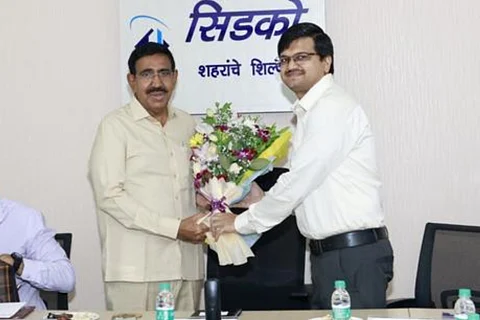

On August 1, Andhra Pradesh Municipal Administration and Urban Development (MAUD) minister P Narayana visited Navi Mumbai, along with the Capital Region Development Authority (CRDA) commissioner Bhaskar Katamneni and a few others. Press statements from the Andhra Pradesh Information and Public Relations (I&PR) cell said that the visit was to see if the Navi Mumbai model of city planning could be referenced for shaping Andhra Pradesh’s capital– the Telugu Desam Party’s (TDP) dream of Amaravati.
“We held a detailed discussion with Navi Mumbai’s City and Industrial Development Corporation (CIDCO) officials. They are constructing the metro as well as the Navi Mumbai airport where they have a 26% stake. They have adopted a land pooling-like scheme and are doing very well. As of the moment, they have a deposit of around Rs 7000 crores and we wanted to study how they are using their money to better the city,” Narayana had said in a press conference, adding that CIDCO also provides housing for people from economically marginalised sections.
He further said that the Maharashtra and Union governments contribute Rs 2.5 lakh and Rs 1.5 lakh respectively for the Economically Weaker Section (EWS) housing. “Anybody who wants the house has to pay Rs 26.5 lakhs in five installments, following which the beneficiaries go through a lottery system for allotment of a house. Since it is Navi Mumbai, it is worth it,” Narayana said.
A source from the AP MAUD ministry told TNM that while the Andhra government is just undertaking an academic study and is likely to visit other cities as well, Navi Mumbai is an impressive model. “The MAUD minister (referring to Narayana) is keen on ensuring that the Township and Infrastructure Development Corporation (TIDCO) housing scheme in Andhra is implemented properly. The MAUD ministry is striving to be better than CIDCO,” the source said.
If Navi Mumbai is to be a model going forward, then that throws up different concerns, as CIDCO has repeatedly come under fire for the very same thing Naryana praised.
Land pooling and farmer protests
In December 2023, farmers from Panvel (a city close to Mumbai) launched an indefinite strike to protest against the implementation of the Navi Mumbai Airport Influence Notified Area (NAINA) project, a city planned close to the Navi Mumbai International Airport.
The NAINA project proposed land pooling by villagers, wherein CIDCO gets to keep 60% of the land for infrastructure development while the project-affected people get the remaining 40%. Since its inception in 2013, the NAINA project has been opposed by residents who want the land pooling to be scrapped, their lands to not be snatched away, and to be compensated adequately. However, CIDCO has remained unresponsive to several such protests over the years.
Activist Hiraman Pagar, who has been campaigning for housing rights for the past few years, told TNM that Navi Mumbai was constructed at a time when a rise in population led to the loss of housing for many in Mumbai. “The airport notified area which CIDCO is responsible for developing is now flooded. The few houses CIDCO built are also collapsing. For the most part, people in need don’t get housing. Only powerful people have got housing on the land. It looks chaka-chak (posh), but the reality is different. Construction workers, farmers, and housewives have not done well,” he said.
This is not the first time that a Mumbai model was considered by the Andhra Pradesh MAUD minister to impress upon its electorate the need for land pooling. During their first term governing divided Andhra Pradesh, the TDP-led state government took some farmers from Amaravati (not to be confused with Amrvati, the city in Maharashtra’s Vidarbha region) to the Magarpatta township in Pune. The intended purpose was to explain how land pooling was useful for the farmers in Magarpatta and how it would likely benefit Amaravati’s farmers.
Magarpatta was a township built by pooling farming lands from 120 families in 1993 and is touted to be highly successful, as the land has been urbanised. But the title remains with the farmers. Aside from the involvement of the Singapore government, the TDP government has pushed the narrative of Mumbai to make the case for land pooling and a neo-liberal vision of Amaravati.
Notably, both visits to Magarpatta and Navi Mumbai happened at a time when the TDP was a National Democratic Alliance (NDA) partner and the Bharatiya Janata Party (BJP) was ruling Maharashtra.
Also Read: How Chandrababu Naidu’s Singapore vision for Amaravati has got him in a legal tangle